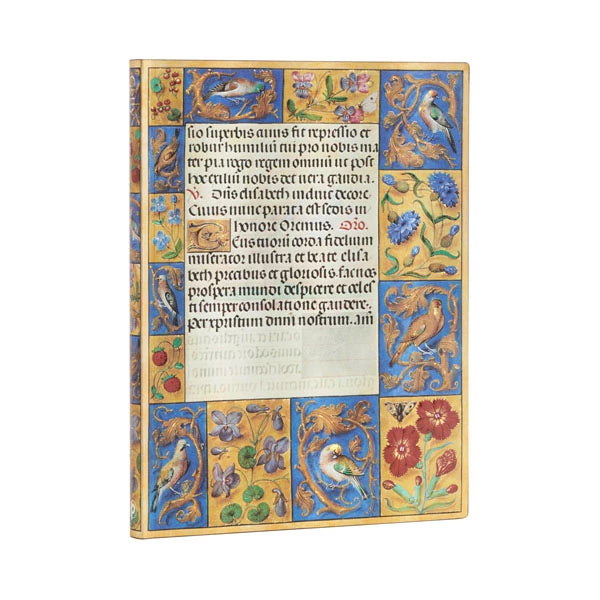
Paperblanks Ancient Illumination - Spinola Hours
SPINOLA HOURS
Ancient Illumination
Paperblanks Journals Format Guide
Displaying astounding naturalistic illusionism, the Spinola Hours is one of the most visually sophisticated 16th-century Flemish manuscripts. It contains a calendar of Church holidays, hours, offices and masses, as well as prayers, hymns and readings, all richly illuminated as seen in the page reproduced here.
Displaying astounding naturalistic illusionism, the Spinola Hours is one of the most visually sophisticated 16th-century Flemish manuscripts. It contains a calendar of Church holidays, hours, offices and masses, as well as prayers, hymns and readings, all richly illuminated as seen in the page reproduced here.
- Original Art: Illuminated manuscript page from the Spinola Hours
- Era: circa 15101520
- Region: Belgium
A book of hours contains texts including a calendar of Church holidays, the Hours of the Virgin (a cycle of prayer services devoted to the Virgin Mary), the Office for the Dead, and other prayers, hymns and readings. This particular example augments these contents with a special series of weekday offices and masses, providing even more possibilities for rich illuminations. The book was undoubtedly commissioned for a wealthy patron, perhaps Margaret of Austria, for whom the Master of James IV of Scotland, a famed manuscript illuminator and painter, produced other works. In the 1700s it belonged to the Spinola family in Genoa, from whom it takes its modern name.
We are honoured to feature this unparalleled example of illumination from the J. Paul Getty Museum as part of our collaborative collection.
Features :
- Smyth Sewn Binding
- Decorative printed cover paper
- FSC-certified text paper
- Threaded stitching and glue, as needed
- Cloth headbands
- Acid-free sustainable forest paper
- Flexible cover and spine



